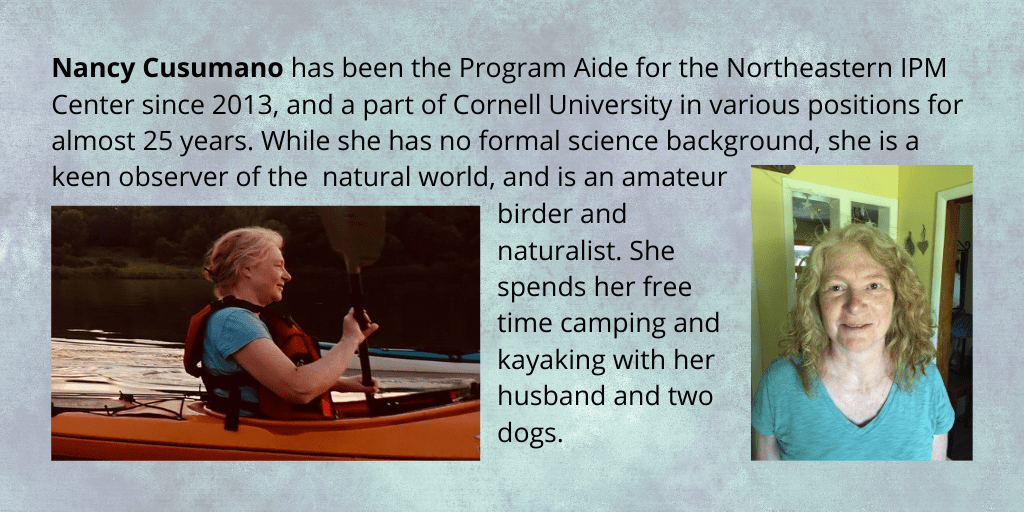Guest Post by Nancy Cusumano

There’s a blue spruce tree right outside my bedroom window. It is one of the first things I look at every morning (along with my husband, of course). I can see if it is sunny, rainy, or snowing. This tree was a very dense, full tree that has harbored several bird nests over the years.
This spring, however, I noticed that I could see right through the tree where I never could before. I think it lost maybe half its needles over the winter. Many branches are completely bare. When I went looking at other blue spruces in my yard, I noticed a similar pattern.
Blue spruce has been widely planted as an ornamental tree far beyond its native range.
It turns out that several issues are known to affect Colorado blue spruce (Picea pungens).
Range and Climate Factors
Blue spruce’s native range spans from northern New Mexico through Colorado, and Utah to Wyoming, and into Alberta and British Columbia–areas with a much cooler and drier climate. However, it has been widely planted as an ornamental tree far beyond that range.
In the wetter, more humid areas of the country, blue spruce is more susceptible to fungal pathogens and insects. The tree also tends to have a much shorter lifespan outside of its native range.

Pests and Pathogens: Signs and Possible Treatments
The symptom you will notice most—as I did—is significant branch die-back starting at the bottom and working its way up the tree. This is exacerbated by environmental stressors such as drought and heat, or our cool, rainy springs here in the Northeast.
One of the fungal diseases that affect spruces is Cytospora canker, which causes the development of small cankers that let sap flow out of the branches or trunk. Another is Rhizosphaera needlecast, which causes yellowing and then browning of needles before the fall-off.
In the wetter, more humid areas of the country, blue spruce is more susceptible to fungal pathogens and insects.
Currently the only chemical treatment for Cytospora canker on blue spruce in the landscape is an injected fungicide that must be applied by a certified applicator. Yearly fungicide treatments can help with needlecast but appropriate timing and good coverage are essential to reduce needle loss. Accurate identification is necessary for any disease to make sure that the correct treatments are used.
Further Reading
Here are a couple good fact sheets on blue spruce:
- What’s Wrong with my Colorado Blue Spruce Tree? (University of Maryland)
- What is Spruce Decline and What should I do about it? (Michigan State University)
- Alternative Confers for Michigan landscapes (While this is written for Michigan, the suggestions are also good for our Northeast climate)
